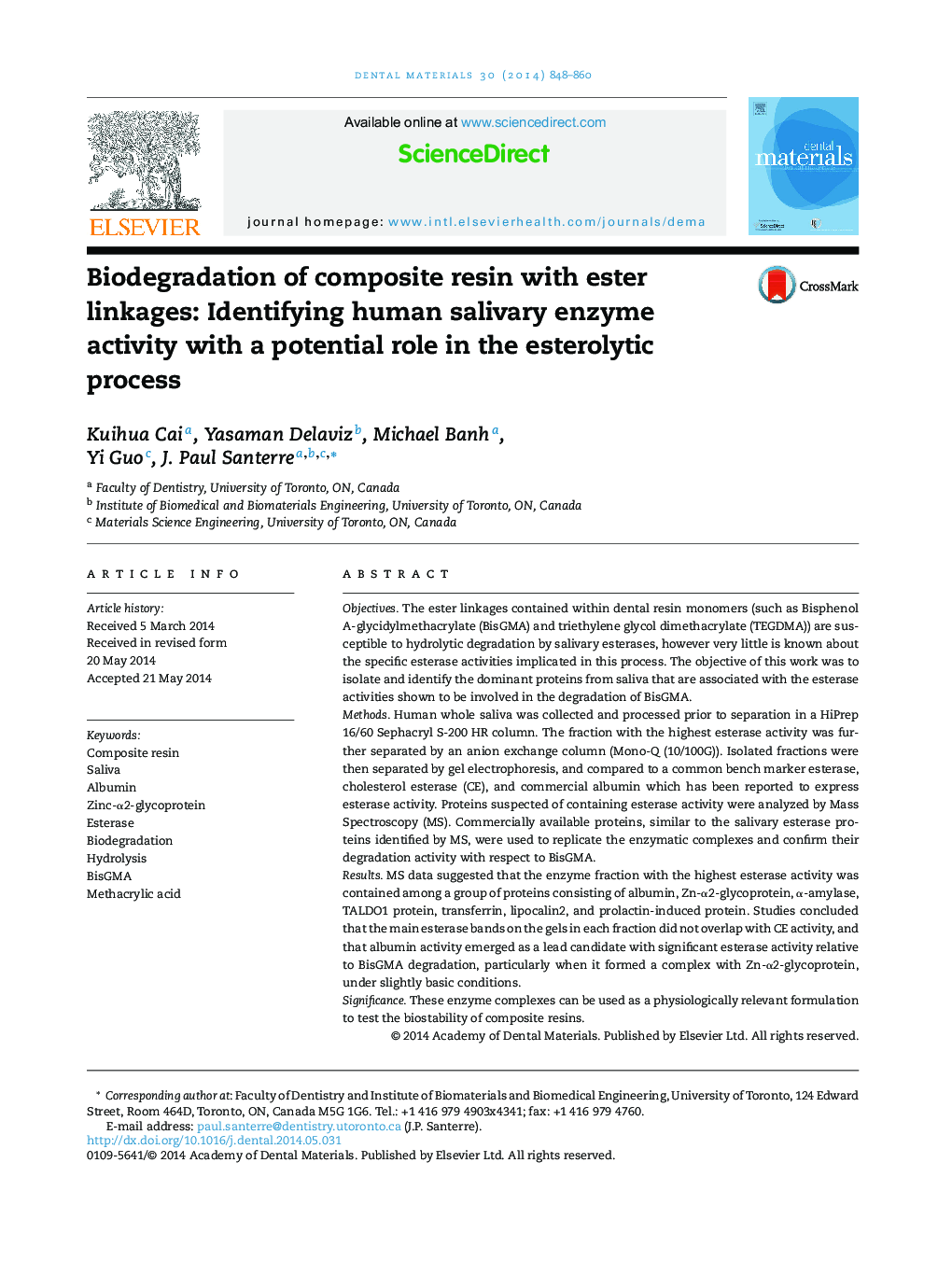| Article ID | Journal | Published Year | Pages | File Type |
|---|---|---|---|---|
| 1420821 | Dental Materials | 2014 | 13 Pages |
ObjectivesThe ester linkages contained within dental resin monomers (such as Bisphenol A-glycidylmethacrylate (BisGMA) and triethylene glycol dimethacrylate (TEGDMA)) are susceptible to hydrolytic degradation by salivary esterases, however very little is known about the specific esterase activities implicated in this process. The objective of this work was to isolate and identify the dominant proteins from saliva that are associated with the esterase activities shown to be involved in the degradation of BisGMA.MethodsHuman whole saliva was collected and processed prior to separation in a HiPrep 16/60 Sephacryl S-200 HR column. The fraction with the highest esterase activity was further separated by an anion exchange column (Mono-Q (10/100G)). Isolated fractions were then separated by gel electrophoresis, and compared to a common bench marker esterase, cholesterol esterase (CE), and commercial albumin which has been reported to express esterase activity. Proteins suspected of containing esterase activity were analyzed by Mass Spectroscopy (MS). Commercially available proteins, similar to the salivary esterase proteins identified by MS, were used to replicate the enzymatic complexes and confirm their degradation activity with respect to BisGMA.ResultsMS data suggested that the enzyme fraction with the highest esterase activity was contained among a group of proteins consisting of albumin, Zn-α2-glycoprotein, α-amylase, TALDO1 protein, transferrin, lipocalin2, and prolactin-induced protein. Studies concluded that the main esterase bands on the gels in each fraction did not overlap with CE activity, and that albumin activity emerged as a lead candidate with significant esterase activity relative to BisGMA degradation, particularly when it formed a complex with Zn-α2-glycoprotein, under slightly basic conditions.SignificanceThese enzyme complexes can be used as a physiologically relevant formulation to test the biostability of composite resins.
